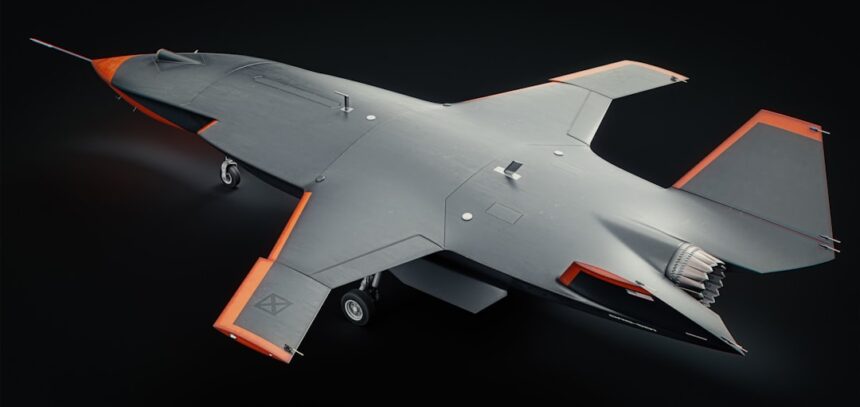The advent of drone technology has significantly transformed the landscape of the defense industry. Drones, or unmanned aerial vehicles (UAVs), have introduced a new paradigm in military operations, enabling forces to conduct surveillance, reconnaissance, and targeted strikes with unprecedented precision and efficiency. Their ability to operate in hostile environments without risking human lives has made them invaluable assets in modern warfare.
The integration of drones into military strategies has not only enhanced operational capabilities but has also altered the dynamics of conflict, shifting the focus from traditional ground-based engagements to aerial dominance. Moreover, the impact of drones extends beyond mere operational advantages; they have also influenced defense budgets and procurement strategies. Nations are increasingly allocating resources towards developing and acquiring drone technology, recognizing its potential to provide a strategic edge.
This shift has prompted defense contractors to innovate rapidly, leading to a surge in research and development efforts aimed at enhancing drone capabilities. As a result, the defense industry is witnessing a significant transformation, with drones becoming central to military planning and execution.
Key Takeaways
- Drones have significantly impacted the defense industry, revolutionizing warfare and surveillance capabilities.
- Key players and stakeholders in the drone industry include defense contractors, technology companies, government agencies, and regulatory bodies.
- Navigating regulatory challenges and compliance is crucial for the safe and legal operation of drones in defense applications.
- Drone technology can be leveraged for defense applications such as reconnaissance, target acquisition, and force protection.
- Artificial intelligence plays a critical role in enhancing the capabilities of drones for warfare and defense operations.
Identifying Key Players and Stakeholders in the Drone Industry
The drone industry is characterized by a diverse array of key players and stakeholders, each contributing to its growth and evolution. Major defense contractors such as Northrop Grumman, General Atomics, and Boeing have established themselves as leaders in drone manufacturing, developing advanced UAV systems that cater to military needs. These companies invest heavily in research and development to stay ahead of technological advancements and meet the evolving demands of armed forces worldwide.
Their expertise in engineering and innovation positions them as pivotal players in shaping the future of drone technology. In addition to defense contractors, government agencies and military organizations play a crucial role in the drone ecosystem. They not only serve as primary customers but also influence regulatory frameworks and operational guidelines for drone usage.
Furthermore, emerging startups and technology firms are entering the market, bringing fresh ideas and innovative solutions that challenge traditional paradigms. This dynamic interplay among established corporations, government entities, and new entrants fosters a competitive environment that drives advancements in drone technology.
Navigating Regulatory Challenges and Compliance in the Drone Era

As drones become increasingly integrated into military operations, navigating regulatory challenges and ensuring compliance has emerged as a critical concern. The rapid proliferation of drone technology has outpaced the development of comprehensive regulatory frameworks, leading to a patchwork of laws that vary by country and region. This lack of uniformity poses challenges for defense organizations seeking to deploy drones effectively while adhering to legal requirements.
The complexities of airspace management, privacy concerns, and international treaties further complicate the regulatory landscape. To address these challenges, defense organizations must engage with policymakers and regulatory bodies to advocate for clear guidelines that facilitate the safe and responsible use of drones. Collaboration between military leaders and regulatory authorities can lead to the establishment of standards that promote innovation while ensuring compliance with safety protocols.
Additionally, ongoing training and education for personnel involved in drone operations are essential to ensure adherence to regulations and mitigate potential risks associated with non-compliance.
Leveraging Drone Technology for Defense Applications
| Application | Advantages | Challenges |
|---|---|---|
| Surveillance | Real-time monitoring, enhanced situational awareness | Battery life, limited payload capacity |
| Target Acquisition | Precision targeting, reduced risk to personnel | Weather conditions, signal interference |
| Logistics Support | Rapid delivery of supplies, cost-effective | Regulatory restrictions, airspace management |
The versatility of drone technology allows for a wide range of applications within the defense sector. From intelligence gathering to combat support, drones have proven their worth in various operational scenarios. Their ability to conduct real-time surveillance provides military commanders with critical situational awareness, enabling informed decision-making on the battlefield.
Furthermore, drones can be equipped with advanced sensors and imaging technologies that enhance their reconnaissance capabilities, allowing for detailed assessments of enemy positions and movements. In addition to surveillance, drones are increasingly being utilized for logistical support in military operations. They can transport supplies, ammunition, and medical equipment to remote or inaccessible areas, reducing the reliance on traditional supply chains.
This capability not only enhances operational efficiency but also minimizes risks associated with manned transport missions. As defense organizations continue to explore innovative uses for drones, their potential to revolutionize military logistics and operational strategies becomes increasingly apparent.
Assessing the Role of Artificial Intelligence in Drone Warfare
Artificial intelligence (AI) is poised to play a transformative role in the future of drone warfare. The integration of AI technologies into drone systems enhances their autonomy, enabling them to perform complex tasks with minimal human intervention. AI-powered drones can analyze vast amounts of data in real-time, allowing for rapid decision-making during critical missions.
This capability not only improves operational efficiency but also reduces the cognitive burden on human operators. Moreover, AI can enhance the effectiveness of drone swarms—groups of drones that operate collaboratively to achieve specific objectives. By leveraging machine learning algorithms, these swarms can adapt to changing environments and coordinate their actions autonomously.
This level of sophistication opens up new possibilities for tactical operations, enabling military forces to execute complex maneuvers with precision and speed. However, the integration of AI into drone warfare also raises ethical concerns regarding accountability and decision-making in combat scenarios.
Exploring Opportunities for Collaboration and Partnerships in the Drone Industry

Collaboration among various stakeholders is essential for fostering innovation and advancing drone technology within the defense sector. Partnerships between defense contractors, technology firms, and research institutions can lead to groundbreaking advancements that push the boundaries of what drones can achieve. By pooling resources and expertise, these collaborations can accelerate the development of next-generation UAVs equipped with cutting-edge technologies such as AI, advanced sensors, and enhanced communication systems.
Furthermore, international collaboration is becoming increasingly important as nations seek to address common security challenges through shared technological advancements. Joint research initiatives and collaborative projects can facilitate knowledge exchange and promote interoperability among allied forces. Such partnerships not only enhance military capabilities but also contribute to building trust among nations as they work together towards common goals in an increasingly complex global security environment.
Addressing Ethical and Legal Considerations in the Use of Drones for Defense
The use of drones in military operations raises significant ethical and legal considerations that must be carefully navigated. The potential for collateral damage during drone strikes poses moral dilemmas regarding civilian casualties and the proportionality of force used in combat situations. As drones become more autonomous through AI integration, questions arise about accountability for decisions made by machines in life-and-death scenarios.
To address these concerns, defense organizations must establish clear ethical guidelines governing drone usage. Engaging ethicists, legal experts, and military leaders in discussions about responsible drone deployment can help create frameworks that prioritize human rights and minimize harm to civilians. Additionally, transparency in drone operations is crucial for maintaining public trust and accountability.
By openly communicating the rationale behind drone strikes and their intended targets, military organizations can foster greater understanding of their actions within the broader context of national security.
Evaluating the Economic and Financial Implications of Investing in Drone Technology
Investing in drone technology presents both opportunities and challenges from an economic perspective. On one hand, the growing demand for advanced UAV systems has created a lucrative market for defense contractors and technology firms alike. As nations prioritize modernization efforts within their armed forces, funding for drone research and procurement is expected to increase significantly.
This trend not only stimulates economic growth within the defense sector but also creates jobs across various industries involved in drone manufacturing and support services. On the other hand, the financial implications of investing in drone technology must be carefully considered. The costs associated with research, development, maintenance, and training can be substantial.
Defense organizations must weigh these expenses against potential operational benefits when making investment decisions. Additionally, fluctuations in government budgets and shifting geopolitical landscapes can impact funding availability for drone programs. Therefore, strategic planning and risk assessment are essential components of any investment strategy related to drone technology.
Managing Security Risks and Threats Posed by Drones in the Defense Sector
While drones offer numerous advantages for military operations, they also pose unique security risks that must be managed effectively. The proliferation of commercial drones has raised concerns about their potential use by adversaries for surveillance or attacks against military installations. Additionally, vulnerabilities in drone systems can be exploited by malicious actors seeking to disrupt operations or gain unauthorized access to sensitive information.
Regular assessments of potential threats should inform strategies for safeguarding against unauthorized access or interference with drone operations. Furthermore, collaboration with law enforcement agencies and intelligence communities can enhance situational awareness regarding emerging threats posed by drones.
Developing Strategies for Defense Industry Adaptation in the Age of Drones
As drones continue to reshape the defense landscape, developing adaptive strategies becomes imperative for organizations within this sector. Embracing innovation through continuous research and development efforts will enable defense contractors to stay competitive amidst rapid technological advancements. Organizations must foster a culture of agility that encourages experimentation with new ideas while remaining responsive to changing operational requirements.
Additionally, investing in workforce training programs is essential for equipping personnel with the skills needed to operate advanced drone systems effectively. As technology evolves, so too must the capabilities of those who manage these assets on behalf of national security interests. By prioritizing adaptability at both organizational and individual levels, defense entities can position themselves for success in an era defined by rapid technological change.
Future Trends and Innovations in Drone Technology for Defense Applications
The future of drone technology within the defense sector is poised for remarkable advancements driven by ongoing research and innovation. Emerging trends such as increased autonomy through AI integration will redefine how drones are utilized on the battlefield. As machine learning algorithms become more sophisticated, drones will be able to perform complex tasks independently while adapting to dynamic environments.
Additionally, advancements in materials science may lead to lighter yet more durable drone designs capable of carrying heavier payloads or operating at greater altitudes. The integration of advanced communication systems will enhance connectivity between drones and command centers, facilitating real-time data sharing that improves situational awareness during missions. As these trends unfold, it is essential for defense organizations to remain vigilant about ethical considerations surrounding emerging technologies while harnessing their potential benefits effectively.
By embracing innovation responsibly, they can ensure that drone technology continues to serve as a force multiplier in safeguarding national security interests well into the future.
In the rapidly evolving landscape of modern warfare, the defense industry faces significant challenges as it adapts to the drone era. The integration of unmanned aerial vehicles (UAVs) into military operations has revolutionized strategies, necessitating advancements in technology and policy. A related article that delves into these challenges can be found on the website “In The War Room.” This article provides insights into how defense sectors are responding to the increasing reliance on drones and the implications for future military engagements. For more detailed analysis, you can read the full article by visiting In The War Room.
FAQs
What are the challenges faced by the defense industry in the drone era?
The defense industry is facing challenges such as developing effective counter-drone technology, adapting to the changing nature of warfare, and addressing ethical and legal concerns surrounding the use of drones.
How is the defense industry adapting to the drone era?
The defense industry is adapting to the drone era by investing in research and development of counter-drone technology, integrating drones into military operations, and collaborating with government agencies to establish regulations and guidelines for drone use.
What are the ethical and legal concerns surrounding the use of drones in the defense industry?
Ethical and legal concerns surrounding the use of drones in the defense industry include issues related to privacy, civilian casualties, and the potential for autonomous drones to make life-and-death decisions without human intervention.
What role do drones play in modern warfare?
Drones play a significant role in modern warfare by providing intelligence, surveillance, and reconnaissance capabilities, as well as the ability to conduct precision strikes and support ground troops in combat operations.
How is the defense industry addressing the threat of weaponized drones?
The defense industry is addressing the threat of weaponized drones by developing and deploying counter-drone technology, conducting research on drone detection and interception methods, and collaborating with government agencies to establish protocols for responding to drone threats.




